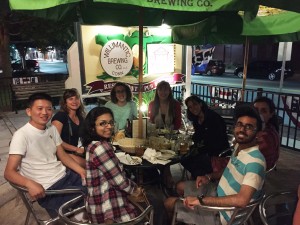Laenen, B. A. Machac, S. R. Gradstein, B. Shaw, J. Patiño, A. Désamoré, B. Goffinet, C. J. Cox, A. Vanderpoorten & J. Shaw. Geographic range in liverworts: does sex really matter? Journal of Biogeography. in press. pdf
Abstract: Why some species exhibit larger geographical ranges than others remains a fundamental, but largely unanswered, question in ecology and biogeography. In plants, a relationship between range size and mating system was proposed over a century ago and subsequently formalized in Baker’s Law. Here, we take advantage of the extensive variation in sexual systems of liverworts to test the hypothesis that dioecious species compensate for limited fertilization by producing vegetative propagules more commonly than monoecious species. As spores are assumed to contribute to random long-distance dispersal, whereas vegetative propagules contribute to colony maintenance and frequent short-distance dispersal, we further test the hypothesis that monoecious species exhibit larger geographical ranges than dioecious ones.

